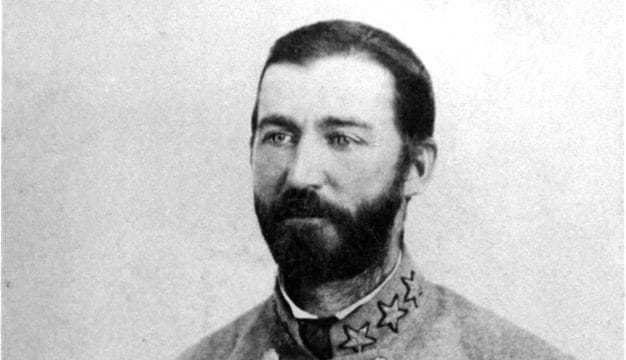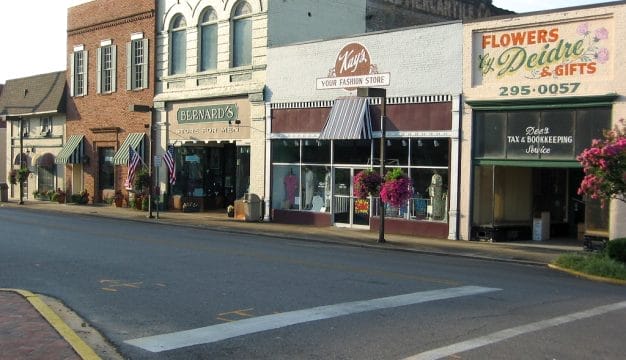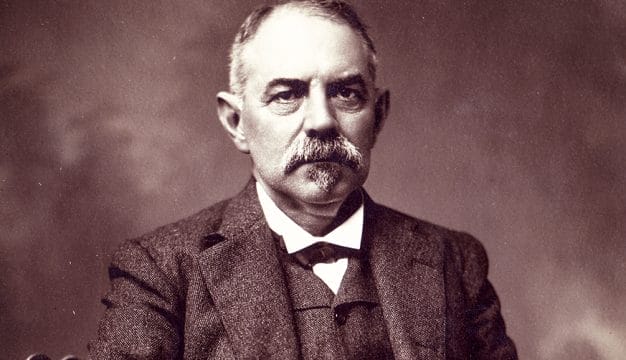Jacksonville
Located in Calhoun County in northeast Alabama, Jacksonville is the home of Jacksonville State University. It has a mayor/council form of government. Worker’s-rights pioneer Lilly McDaniel Ledbetter was born in Jacksonville, and journalist Rick Bragg was raised in the Possum Trot community just outside the city.
History
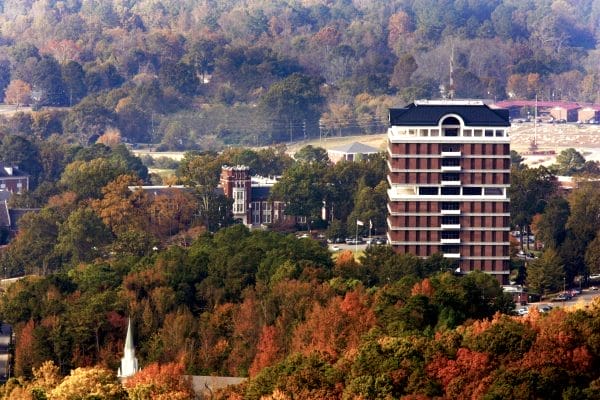 Jacksonville State University
Jacksonville arose on the site of a Native American settlement. In its early days, the town was known as Drayton and then as Madison. It became the seat of Benton County, and a courthouse was constructed in 1833. (Benton County would be renamed Calhoun County in 1858.) The town was renamed Jacksonville in honor of Pres. Andrew Jackson in 1835 and incorporated on January 9, 1836. The Jacksonville Male Academy and the Cane Creek Academy were established by 1839, followed sometime later by the Jacksonville Female Academy. (Both academies would be absorbed by extant Calhoun College in 1869.) By the 1840s, the town boasted a water-works systems that consisted of underground wooden pipes conveying spring water to the city center; this utility would evolve into a much larger system before it was discontinued in the 1960s. Cotton farming brought considerable wealth to the town, spurring the construction of many large homes during the antebellum period. In the early 1850s, a rail line was established between Jacksonville and Rome, Georgia, and eventually became part of the Southern Railway. A fire in 1883 destroyed much of the town surrounding the square; it was followed by a building boom that included an opera house. Also that year, the State Normal School was established and took over the facilities of Calhoun College; the college would become Jacksonville State University (JSU) in 1966.
Jacksonville State University
Jacksonville arose on the site of a Native American settlement. In its early days, the town was known as Drayton and then as Madison. It became the seat of Benton County, and a courthouse was constructed in 1833. (Benton County would be renamed Calhoun County in 1858.) The town was renamed Jacksonville in honor of Pres. Andrew Jackson in 1835 and incorporated on January 9, 1836. The Jacksonville Male Academy and the Cane Creek Academy were established by 1839, followed sometime later by the Jacksonville Female Academy. (Both academies would be absorbed by extant Calhoun College in 1869.) By the 1840s, the town boasted a water-works systems that consisted of underground wooden pipes conveying spring water to the city center; this utility would evolve into a much larger system before it was discontinued in the 1960s. Cotton farming brought considerable wealth to the town, spurring the construction of many large homes during the antebellum period. In the early 1850s, a rail line was established between Jacksonville and Rome, Georgia, and eventually became part of the Southern Railway. A fire in 1883 destroyed much of the town surrounding the square; it was followed by a building boom that included an opera house. Also that year, the State Normal School was established and took over the facilities of Calhoun College; the college would become Jacksonville State University (JSU) in 1966.
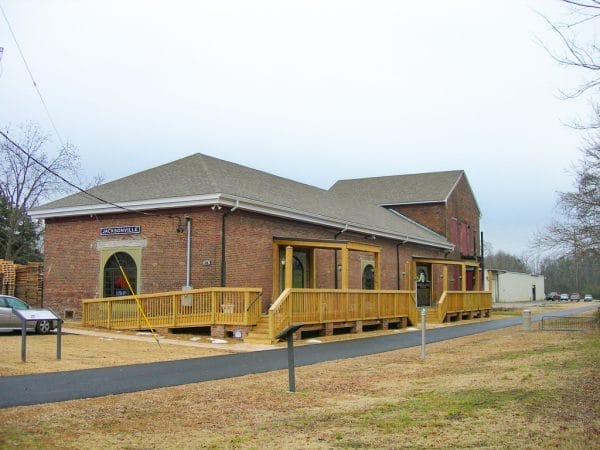 Old Jacksonville Train Depot
A brick courthouse was erected in 1881 but was of such poor construction that it was replaced in 1885 and torn down in 1886. Its replacement burned down in 1927. In either 1899 or 1900, the county seat was moved to Anniston. The textile industry came to Jacksonville with the opening of the Union Yarn Mill in 1906. It would be a major employer in the town, supplying yarn to apparel companies such as Fruit of the Loom before closing down in 2001. The struggles of textile workers who lost their livelihoods in the closure were related by Alabama writer Rick Bragg in The Most They Ever Had in 2009. The city benefited from its proximity to Fort McClellan and Anniston Army Depot after those facilities were established in response to World War I and World War II, respectively. On March 19, 2019, an EF-3 tornado with very large hail crossed the northern part of the city and severely damaged many buildings and homes and significant parts of the JSU campus but caused very few injuries and no deaths.
Old Jacksonville Train Depot
A brick courthouse was erected in 1881 but was of such poor construction that it was replaced in 1885 and torn down in 1886. Its replacement burned down in 1927. In either 1899 or 1900, the county seat was moved to Anniston. The textile industry came to Jacksonville with the opening of the Union Yarn Mill in 1906. It would be a major employer in the town, supplying yarn to apparel companies such as Fruit of the Loom before closing down in 2001. The struggles of textile workers who lost their livelihoods in the closure were related by Alabama writer Rick Bragg in The Most They Ever Had in 2009. The city benefited from its proximity to Fort McClellan and Anniston Army Depot after those facilities were established in response to World War I and World War II, respectively. On March 19, 2019, an EF-3 tornado with very large hail crossed the northern part of the city and severely damaged many buildings and homes and significant parts of the JSU campus but caused very few injuries and no deaths.
Demographics
According to 2020 Census estimates, Jacksonville recorded a population of 12,796. Of that total, 70.0 percent identified themselves as white, 24.8 percent as African American, 4.3 percent as Hispanic or Latino, 3.7 percent as two or more races, 1.0 percent as Asian, and 0.1 as Native Hawaiian and Other Pacific Islander. The city’s median household income was $41,530 and the per capita income was $22,691.
Employment
According to 2020 Census estimates, the workforce in Jacksonville was divided among the following industrial categories:
- Educational services, and health care and social assistance (30.9 percent)
- Retail trade (22.6 percent)
- Arts, entertainment, recreation, and accommodation and food services (13.7 percent)
- Manufacturing (6.4 percent)
- Professional, scientific, management, and administrative and waste management services (5.7 percent)
- Construction (4.9 percent)
- Public administration (4.1 percent)
- Information (3.3 percent)
- Other services, except public administration (2.7 percent)
- Wholesale trade (2.4 percent)
- Finance, insurance, and real estate, rental, and leasing (1.8 percent)
- Transportation and warehousing and utilities (1.5 percent)
Education
Public education in Jacksonville is overseen by both the Jacksonville City School District and the Calhoun County School System. Jacksonville operates a K-6 elementary school and a 7-12 high school, and the county supervises a K-3 elementary and a 4-12 high school. In addition, Calhoun County operates a career and technical center for grades 10-12, and city is home to a non-denominational Christian-based pre-K-12 academy. The city is also home to Jacksonville State University, a post-secondary institution offering college-level and master’s level degree programs.
Transportation
Jacksonville is bisected by State Road 21, which runs north-south connecting the city to Anniston and Piedmont. State Road 204 accesses the city in the north connecting it to U.S. Route 431. McMinn Airport is located fewer than eight miles south of the city, to the east of Fort McClellan.
Events and Places of Interest
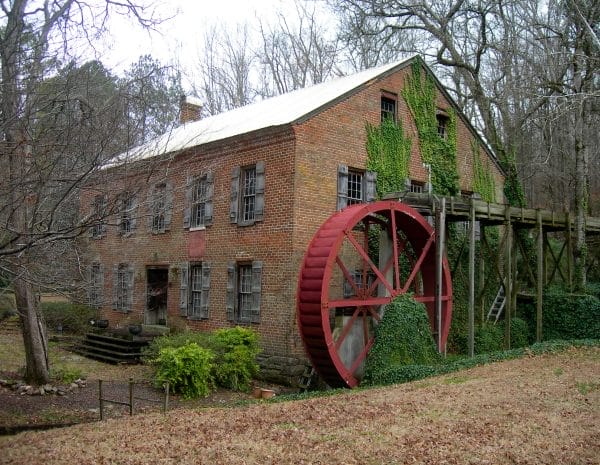 Aderholt Mill in Jacksonville
Jacksonville borders the Talladega National Forest‘s Shoal Creek District, which offers camping, fishing, hiking, hunting, swimming, and limited boating. Also, the Chief Ladiga Trail, a 33-mile walking and bicycle path built on an abandoned Southern Railway railbed, passes through Jacksonville. Just south of the city is the public 18-hole Stoney Brook Golf Course. North of Jacksonville is Germania Springs Park, which has picnic facilities, and Jacksonville City Park provides outdoor activities as well. The city also manages a public swimming pool, a community and fitness center, athletic fields, and a walking track.
Aderholt Mill in Jacksonville
Jacksonville borders the Talladega National Forest‘s Shoal Creek District, which offers camping, fishing, hiking, hunting, swimming, and limited boating. Also, the Chief Ladiga Trail, a 33-mile walking and bicycle path built on an abandoned Southern Railway railbed, passes through Jacksonville. Just south of the city is the public 18-hole Stoney Brook Golf Course. North of Jacksonville is Germania Springs Park, which has picnic facilities, and Jacksonville City Park provides outdoor activities as well. The city also manages a public swimming pool, a community and fitness center, athletic fields, and a walking track.
Listed on the Alabama Register of Landmarks and Heritage are the Caldwell House (ca. 1860) and the Charles B. Henry barn (ca. 1910), which is also listed on the National Register of Historic places. Also listed on the National Register are Aderholt Mill (ca. 1825), the Downtown Jacksonville Historic District (ca. 1850), the First Presbyterian Church (ca. 1850), the Dr. J. C. Francis Office (ca. 1852), and the Profile Cotton Mills Historic District (ca. 1910).
Further Reading
- Heritage of Calhoun County, Alabama. Clanton, Ala.: Heritage Publishing Consultants, Inc., 1998.
